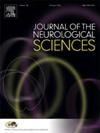在全身性重症肌无力患者临床实践中,efgartigimod开始后口服糖皮质激素的使用减少
IF 3.2
3区 医学
Q1 CLINICAL NEUROLOGY
引用次数: 0
摘要
本研究评估了先前使用慢性gMG的广泛性重症肌无力(gMG)患者口服糖皮质激素(GC,强的松等效物)使用的变化,这些患者开始使用并持续使用efgartigimod≥12个月,回顾性地从美国索赔数据库中确定。重症肌无力日常生活活动(MG-ADL)评分从患者支持计划中检索。主要终点是在服用埃加替莫前3个月和服用埃加替莫后3、6、9和12个月评估GC平均日剂量(GC ADD)。总共纳入266例患者(平均年龄59.8岁,女性占45%)。与基线(17.9 [15.7,20.1]mg/天)相比,efgartigimod开始治疗后3个月(14.3 [12.6,16.0]mg/天)、6个月(13.4 [11.5,15.4]mg/天)、9个月(11.6 [10.0,13.3]mg/天)和12个月(10.2 [8.8,11.6]mg/天)的GC ADD平均(95% CI)显著降低(p < 0.001)。在12个月时,66% (n = 176/266)的患者减少了类固醇剂量。其中68%和51%分别达到≥50%和≥75%的ADD减少。使用GC ADD≤5mg /天的患者比例从基线时的13%增加到12个月时的42%。在126例(47%)有MG-ADL评分的患者中,最佳随访平均MG-ADL (95% CI)较基线显著降低(从7.9[7.2,8.5]降至3.1[2.6,3.6]),而平均GC ADD仍显著降低(p < 0.05)。因此,在基线时使用慢性GCs的gMG患者中,efgartigimod启动后GC使用显著减少,同时保持改善的MG-ADL评分,强调了efgartigimod在gMG治疗中潜在的类固醇节约作用。本文章由计算机程序翻译,如有差异,请以英文原文为准。
Reduction in oral glucocorticoid use after efgartigimod initiation in clinical practice among patients with generalized myasthenia gravis
This study evaluated changes in oral glucocorticoid (GC, prednisone equivalent) use among patients with generalized myasthenia gravis (gMG) previously using chronic GCs, who initiated and continued efgartigimod for ≥12 months, identified retrospectively from a US claims database. Myasthenia Gravis Activities of Daily Living (MG-ADL) scores were retrieved from a patient support program. The primary outcome was GC average daily dose (GC ADD) assessed during the 3 months before and 3, 6, 9, and 12 months after efgartigimod initiation. Overall, 266 patients were included (mean age: 59.8 years; 45 % female). Mean (95 % CI) GC ADD was significantly reduced at 3 (14.3 [12.6, 16.0] mg/day), 6 (13.4 [11.5, 15.4] mg/day), 9 (11.6 [10.0, 13.3] mg/day), and 12 (10.2 [8.8, 11.6] mg/day) months post-efgartigimod initiation compared to baseline (17.9 [15.7, 20.1] mg/day) (p < 0.001). At 12 months, 66 % (n = 176/266) reduced steroid dose. Among those, 68 % and 51 % achieved ≥50 % and ≥ 75 % ADD reduction, respectively. The proportion of patients using GC ADD of ≤5 mg/day increased from 13 % at baseline to 42 % at 12 months. Among 126 patients (47 %) who had MG-ADL scores available, there was a significant reduction from baseline in best follow-up mean (95 % CI) MG-ADL (from 7.9 [7.2, 8.5] to 3.1 [2.6, 3.6]), while mean GC ADD remained significantly reduced (p < 0.05). Thus, in patients with gMG using chronic GCs at baseline, GC use substantially reduced following efgartigimod initiation, while retaining improved MG-ADL scores, underscoring the potential steroid-sparing effect of efgartigimod in gMG treatment.
求助全文
通过发布文献求助,成功后即可免费获取论文全文。
去求助
来源期刊

Journal of the Neurological Sciences
医学-临床神经学
CiteScore
7.60
自引率
2.30%
发文量
313
审稿时长
22 days
期刊介绍:
The Journal of the Neurological Sciences provides a medium for the prompt publication of original articles in neurology and neuroscience from around the world. JNS places special emphasis on articles that: 1) provide guidance to clinicians around the world (Best Practices, Global Neurology); 2) report cutting-edge science related to neurology (Basic and Translational Sciences); 3) educate readers about relevant and practical clinical outcomes in neurology (Outcomes Research); and 4) summarize or editorialize the current state of the literature (Reviews, Commentaries, and Editorials).
JNS accepts most types of manuscripts for consideration including original research papers, short communications, reviews, book reviews, letters to the Editor, opinions and editorials. Topics considered will be from neurology-related fields that are of interest to practicing physicians around the world. Examples include neuromuscular diseases, demyelination, atrophies, dementia, neoplasms, infections, epilepsies, disturbances of consciousness, stroke and cerebral circulation, growth and development, plasticity and intermediary metabolism.
 求助内容:
求助内容: 应助结果提醒方式:
应助结果提醒方式:


